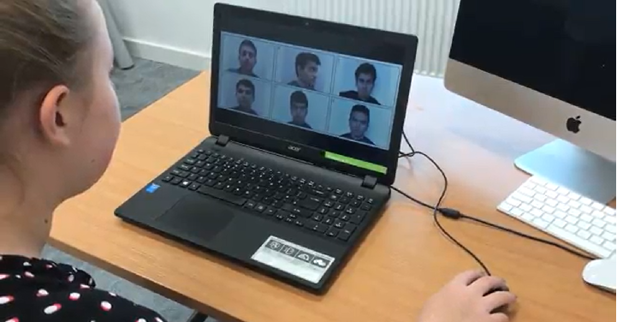
Features
Technology
Improving identification accuracy via 3D interactive lineups
January 4, 2022 By Heather Flowe
 Photo credit: Heather Flowe
Photo credit: Heather Flowe Criminal identification lineups continue to be an important tool for identifying perpetrators, but new approaches are required to improve the accuracy of eyewitness identification.
In 2014, the National Academy of Sciences called for the urgent development of new technologies to help translate the latest science on eyewitness identifications and identify new identification procedures for the global law enforcement community.
To that end, researchers at the University of Birmingham (UK) have led research alongside law enforcement experts to develop a cost-effective solution that works alongside existing identification systems and processes. The university then published the findings of their experimental studies.
The promising results suggest a viable pathway to improving discrimination accuracy, better supporting the identification and prosecution of criminals and reducing the risk of wrongful conviction.
It is crucial to both increase correct identifications of guilty suspects as well as lower ‘false positive’ identifications of innocent suspects. According to the Innocence Project, misidentification is the single greatest cause of wrongful conviction in the U.S. Since 1989, 365 wrongful convictions have been overturned based on new DNA evidence; reliance on inaccurate eyewitness testimony played a role in securing convictions in many of these cases.
Introducing an interactive procedure
In the U.S., and indeed most countries worldwide, criminal identification lineups consist of static photographs. Lineup members are shown from the shoulders up, facing forward, even if a witness viewed the perpetrator from a different angle at the time of the crime (e.g., profile view).
This method does not account for one of the most influential principles of human memory—encoding specificity—which states that the context in which memories are acquired and retrieved is a powerful determinant of memory accuracy.
For eyewitnesses, this context includes the angle from which they observed the incident and the perpetrator.
The novel interactive lineup procedure developed by the researchers provides a 3D interactive lineup in which eyewitnesses can rotate the lineup members’ faces, viewing them in any pose desired.
A study from American Psychologist found that, compared to the traditional static frontal pose lineups, discrimination accuracy is significantly increased when using the interactive tool.
This research, and a second study published in Nature Sci Reports, provide the first evidence that the new interactive procedure can increase accuracy of eyewitness identification, both increasing correct identifications and decreasing incorrect identifications.
This procedure also reduced own race bias; the most common factor associated with cases of mistaken identification is the witness being of a different race than the culprit. Faces are 1.4 times more likely to be misidentified if they are of a different race than the person making the identification when using traditional lineup procedures. The interactive lineup tool improved accuracy in other race identifications.
Eyewitnesses naturally manipulate images to improve identification
The study in Nature Sci Reports tested whether witnesses would spontaneously rotate the lineup faces to match the angle in which they saw the perpetrator and, if so, whether this was also associated with increased identification accuracy.
Researchers recruited more than 3,000 volunteer ‘witnesses’ to test their discrimination accuracy. The volunteers watched a video of a staged crime being committed, and were then shown images of the perpetrator, alongside filler images of similar faces.
The researchers observed that witnesses naturally (without instruction) moved the images into the best position for identification.
Furthermore, the results again showed that discrimination accuracy was significantly greater when witnesses were able to manipulate 3D images of suspects to view the lineup members in the same angle as they had studied the perpetrator, when compared to the control group using the traditional static method.
The findings have garnered praise from leading memory experts and are considered to show the first procedure that successfully significantly enhances memory accuracy.
Guidance for law enforcement
- Consider alternative approaches to improve the accuracy of eyewitness identification in lineups.
- Actively seek out methods that account for ‘encoding specificity’ and allow eyewitnesses to view suspects in alternative poses.
- Read more about the work of the Applied Memory Lab at the University of Birmingham.
Reference
- Colloff, Flowe et al (2021). Active exploration of faces in police lineups increases discrimination accuracy for own- and other- race faces. American Psychologist.
- Colloff, Flowe et al (2021). ‘Perpetrator pose reinstatement during a lineup test increases discrimination accuracy.’ Scientific Reports.
Heather Flowe is a Professor of Psychology at the University of Birmingham in the UK. She researches how people remember criminal events, and develops memory enhancing, broad reach, low-cost procedures that are integrated into legal systems around the world.
Print this page